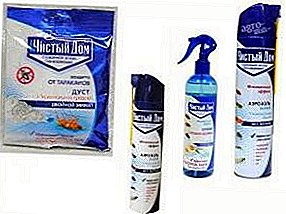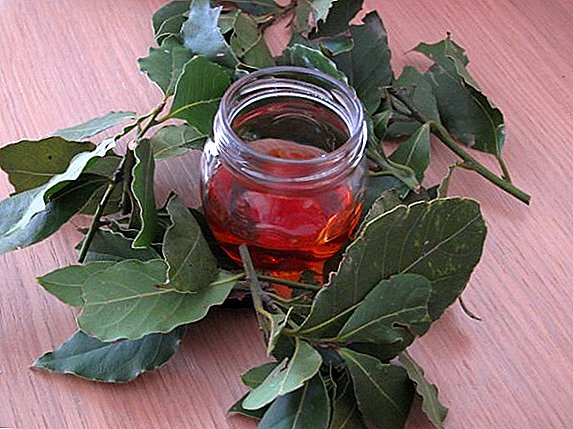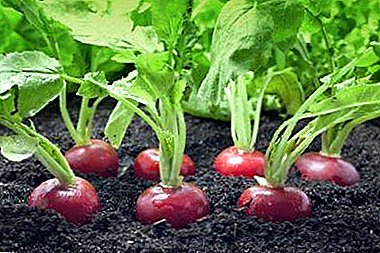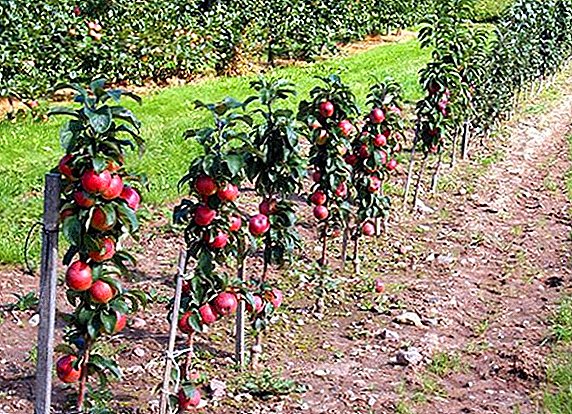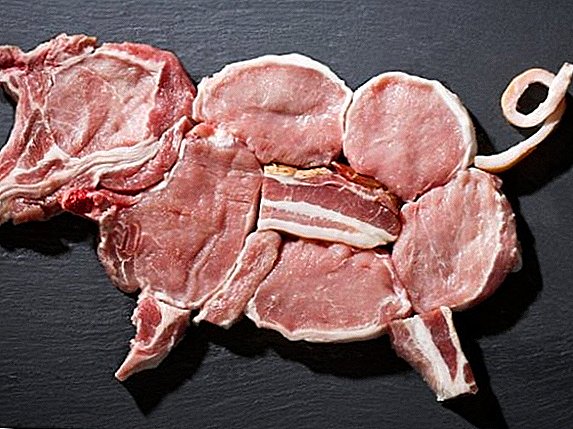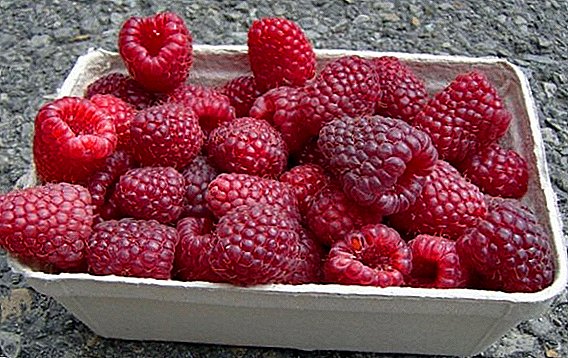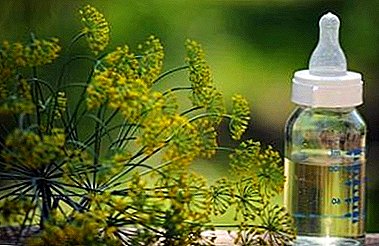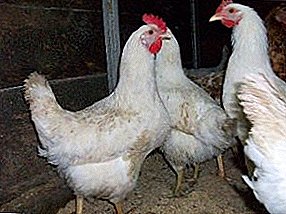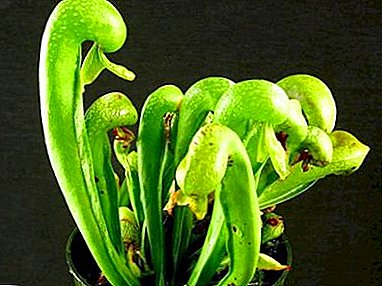
Darlingtonia Californian is a rare visitor in the houses of room-pot lovers, because it is a rather fastidious plant and it is necessary to create special conditions for it.
Plant description
Darlingtonia Californian is like a cobra that has dismissed its hood. For the special structure of the leaves, the flower was named lily cobra. Originally from Darlingtonia from California and Origons. Dwells a plant in its homeland in the marshes and springs, where cold water flows. The plant is very rare, therefore protected by the Washington Convention.
It is a bright representative of the genus sarracienia, insectivorous marsh plants. In nature, the leaves of a predator reach meters in length. During growth, they create a kind of outlet. The leaves have a red-green shade, the leaf tips are split in shape.
As it grows in its natural environment, you can watch the video:
The plant blooms with red or orange flowers six centimeter diameter. Its leaves are traps filled with sweet nectar, attracting with its smell of insects.
Getting into the flower jar with sweet nectar, the insect is held by long hairs, there is no chance of getting out of the predatory paws of the plant. As a result, the insect falls to the bottom of the jug, where it decomposes with the help of microorganisms and bacteria contained in the liquid of the flower.
The height of a predatory plant in nature reaches 80 centimeters, in room conditions darlingtonia grows no higher than 20-30 cm.
Different conditions for the growth of darlingtonia California:




How to grow at home?
Darlingtonia requires special conditions for growth. She needs coolness and moisture for the rootswhile warm and sunshine for the aboveground part. Low soil temperature can be achieved by putting ice on the soil.
In nature, the plant receives these conditions, located on the banks of mountain rivers, in which the running water has a rather low temperature.
Lighting and temperature for growing
Darlingtonia can grow in some shading, but prefers bright lighting. Only it is impossible to allow hit on a flower of direct rays, which are more harmful than the shadow.
Therefore, it is advisable to have it near or on Western or Eastern windows. With a north orientation, the lighting will be missed. And if the windows of the room face south, then the plant should be moved away from the window.
Ensuring the optimum temperature of cultivation - the most difficult in the maintenance of the flower. Darlingtonia needs temperature about 18 degrees. During the rest period - no higher than 10 degrees.
In winter, the plant needs to ensure the temperature 8-10 degrees and reduce the amount of watering. The access of light in a dormant period is not limited. Darlingtonia need light all year round.
ATTENTION. Any active actions - transplanting or even moving to another place - in the period of rest for the flower are destructive. Leave the flower in winter alone.
Rules for watering and feeding
Water plant that lives in natural swamp conditions, you need a lot. It is advisable to keep the pot in a pallet with pebbles, which periodically pour cold water.
 Plant sensitive to potassium and magnesium. It is better not to feed it at all, providing food with suitable soil.
Plant sensitive to potassium and magnesium. It is better not to feed it at all, providing food with suitable soil.
Air humidity requirements
Moisture for darlingtonia need increased. Its level is maintained by regular spraying, installing artificial fountains and containers filled with water next to the flower.
Soil and feeding rules
For planting darlingtonia is a mixture of peat, leaf soil, sand and charcoal (2x0, 5x0, 5x0, 5). Soil should be light and not very nourishing. All the necessary nutrients this flower gets through photosynthesis and insects, which need to be thrown into the traps. Darlingtonia can be fed with mosquitoes or flies.
Transplant and pruning
Darlingtonia doesn’t need frequent transplantation, it’s enough to do it once in 3 years, it is possible and less. When transplanting the plant is moved to a larger container. It is recommended to grow this flower in a shallow, but wide enough pot.
Since the flower is rarely transplanted, it should have enough space to form the root system.
REFERENCE. If you mix a special composition for transplantation is not possible, you can buy soil for azaleas.
This plant does not need pruning. Beautiful forms of shoots it forms independently.
Reproduction of lily-cobra
 After flowering darlingtonia forms a fruit filled with numerous seeds.
After flowering darlingtonia forms a fruit filled with numerous seeds.
They are placed on the surface of the fertile soil in a flat box. The seeds are not sprinkled on top, because they need a lot of light to germinate.
Grow Darlingtonia from seed hard enough, rarely who manages to achieve their germination.
You can multiply the plant by dividing the bush. Do it during transplantation in the spring. Separate from the adult plant with a piece of rhizome. Place the division necessarily sprinkled with charcoal to avoid rotting.
Bloom
At the very end of spring or early summer the cobra lily blooms red-brown or bright yellow flowers. Flowers with oblong petals are located on long, hanging peduncles.
For seed buds can be re-pollinated with a soft brush.
Pests and plant diseases
Darlingtonia is rarely affected by pests, but if they still hit the flower, they cannot be destroyed with the help of poisons. From insecticides, the plant may die. You can use only vegetable poisons.
From flower diseases prone to various rot. The roots of the plant rot in violation of the rules of watering and too low a temperature content in the summer.
Home maintenance problems
Sometimes the flower starts grow and dry the tips of the leaves. The reason for this phenomenon is high temperature and lack of moisture in the air. It is possible to cure a plant, only having provided it necessary conditions of the maintenance.
 If there is stagnation of water in the pot, with poor drainage, a fungus develops on the soil surface. Usually this happens when a combination of excessive moisture with too low air temperature.
If there is stagnation of water in the pot, with poor drainage, a fungus develops on the soil surface. Usually this happens when a combination of excessive moisture with too low air temperature.
Darlingtonia should be placed in a warmer room, remove the top layer of soil and pour a new one. In addition, you need to normalize watering.
The use of predatory plants in the house
It is the destruction of insects in the room is a useful property of this plant. But not so much practical as aesthetic value is the cultivation of darlingtonia in the house.
The extraordinary, mysterious beauty of her attracts the eye and gives a lot of positive emotions.
It is very difficult to grow Darlingtonia at home, which has a very capricious character. But its fascinating, somewhat frightening beauty is worth the application of some effort in order to get such an unusual and mysterious interior decoration.


